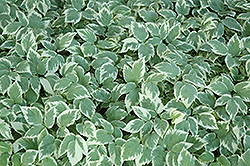Sea Buckthorn, Hippophae rhamnoides

You got to love bright orange in the dead of winter. These berries aren't only high in vitamin A and C, but show them selves in the fall and winter.
This fun shrub grows 4.6-9.1m high and spreads 4.6-9.1m.
It has yellow flowers in the spring before it's leaves show.
We also can't forget its interesting silvery-green leaves.

Sea Buckthorn prefers to grow in hot, dry, sunny locations. It can survive in poor, salty, alkaline soil. So I suggest this plant for sea-side gardeners and by roadways that get salted in the winter.
This hardy shrub looks great in mass plantings and hedges. Try it in front of a line of large evergreens. It can also be used to stabilize slopes.

Prune Sea Buckthorn after it blooms, because it blooms heaviest on previous seasons growth.
The spines on this shrub not only add texture to this shrub, but can help keep animals out of areas if it's planted in a hedge.
For this shrub to produce this yummy berry it is necessary to have a male and female shrub. The female plant will produce berries and the male plant is needed for pollination.
Burning Bush or Winged Euonymus,
Euonymus alatus

You can't say no to this shrub, because not only does it have bright red foliage in the fall, but when the leaves are gone and the snow falls the ridges hold the snow creating a stunning display.
This shrub does get small green-yellow flowers in mid-summer followed by seed pods in the fall. Although these features aren't noticed often, because of it's foliage.
Winged Euonymus is 4.5-6.1m high and wide with a rounded form.
This funky shrub prefers moist soil and grows in sun or shade.

If looks great as a hedge or as an accent plant.
Prune this shrub in late winter or early spring before the leaves show.

Plant in a sheltered site that gets good snow cover thorough out the winter.
Also try this unique stems in your next floral arrangement!
WATCH OUT!!!
No one loves Red Osier Dogwood more than me because of its amazing red bark that just pops out at you through the snow. But WATCH OUT!!! it can easily propagate on it's own. If stems of this shrub gets buried by soil or mulch it can sprout roots and start spreading. This is great for a more messy natural look, but for a more formal round look it may take some work to keep it that way.
Red Osier Dogwood, Cornus sericea 'Kelseyi'

Red Osier is 6.1-9.1m wide and 4.6-7.6m tall.
This fun shrub has creamy white flowers that smell wonderful!
It also has blue-black berries.
The best to time to prune this shrub is in late winter or early spring. It is suggested that old wood is pruned out to encourage new bright red growth every three to four years.
This cheeky stemmed shrub stands out under mature trees.















